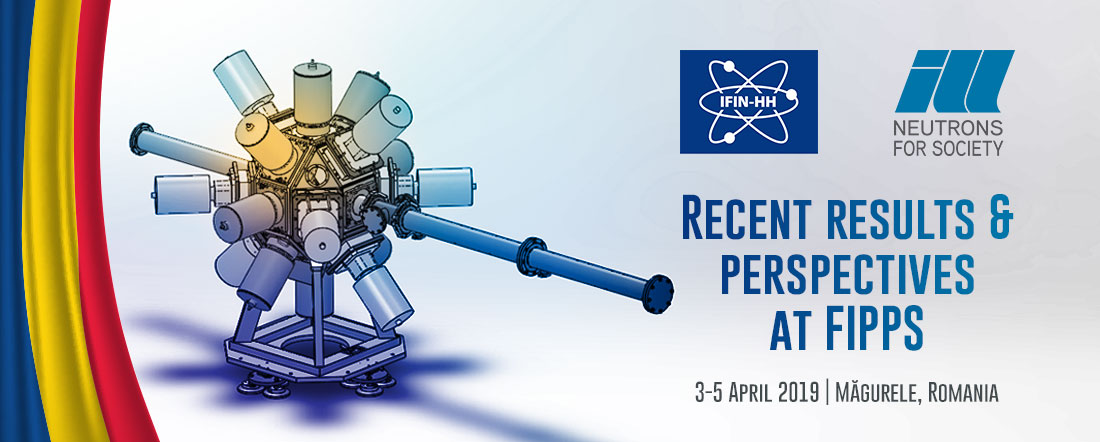Angular correlation measurements and direct linear polarization measurements are
powerful tools for identifying the spins and parities of excited nuclear states involved in a γ-ray cascade, and for measuring the multipole orders and mixing ratios of transitions. Though the physical angular correlations are fully calculable from first principles, experimental effects can make the extraction of...
The evolution of shell structure far from the β stability line is one of the great challenges over the past two decades. Neutron rich nuclei near magic numbers show modifications in their properties as expected by shell model calculations that uses traditional shell closures. For the study of these nuclei, the ADT (Advanced Delayed Technique) βγγ(t) technique is used. This technique was...
The upcoming high brilliance gamma beam facility at ELI-NP (Extreme Light Infrastructure – Nuclear Physics) will open up a new horizon on nuclear physics research by photo-induced nuclear reaction mechanisms. One of the processes, Nuclear Resonance Fluorescence (NRF), is a very effective way to measure and study basic nuclear properties. The NRF process is highly important as both the...
Nuclear fission is a complex process, for which an microscopic description is challenging. Most of the energy of the process is transferred into kinetic energy : fragments are repulsed by Coulomb force according to their shape evolution after the scission point. How exactly the remaining energy is shared between the two fragments is one of the open questions on the fission process. Another one...
Lifetime measurements allow extraction of fundamental information on the nature of the excited states of a nuclear system. Since nuclear lifetimes cover many orders of magnitude, a number of experimental techniques and detection setups have been developed depending on the range of the lifetime of interest. The Gamma-ray Induced Doppler Shift Attenuation (GRIDSA) Method presented here is...
Neutron and proton inelastic cross section measurements were performed at the GELINA neutron source of EC-JRC, Geel, Belgium and at the 9 MV Tandem accelerator of IFIN-HH, Magurele, Romania. The talk will explain the practical importance of these cross sections, will describe the experimental setup and will emphasize the quality of the results.
An experimental campaign to perform prompt and delayed spectroscopy of the fission fragments from the 238U(n,f) and 232Th(n,f) reactions has been recently carried out. The seven-week-long campaign was performed with the nu-ball spectrometer coupled to the LICORNE directional fast neutron source based at the ALTO facility of the IPN Orsay and invloved a large international collaboration. These...
Certain (n,gamma) and (n,fission) experiments with high physics interest have not been performed yet due to non-availability of suitable targets. I will review the availability and possible production of rare isotope targets that would enable such experiments.
After the successful observation of an isovector octupole state in $\mathrm{^{144}Nd}$ in the EXILL campain 2013 [1], we performed at FIPPS (phase 1) a coincident $\mathrm{^{145}Nd}(n,\gamma\gamma)$ experiment to study the level structure of $\mathrm{^{146}Nd}$. The $\mathrm{^{145}Nd}(n,\gamma\gamma)$ is well suited to search for isovector octupole states because the neutron capture state of...
The structure of Ca isotopes between N=20 and N=28 is crucial to understand the evolution of single-particle states and collectivity from symmetric to neutron-rich systems. Moreover, new experimental results may serve as a benchmark for the most advanced theoretical models, such as state-of-the-art shell model calculations [1] and ab-initio approaches, employing chiral two- and three-nucleon...

